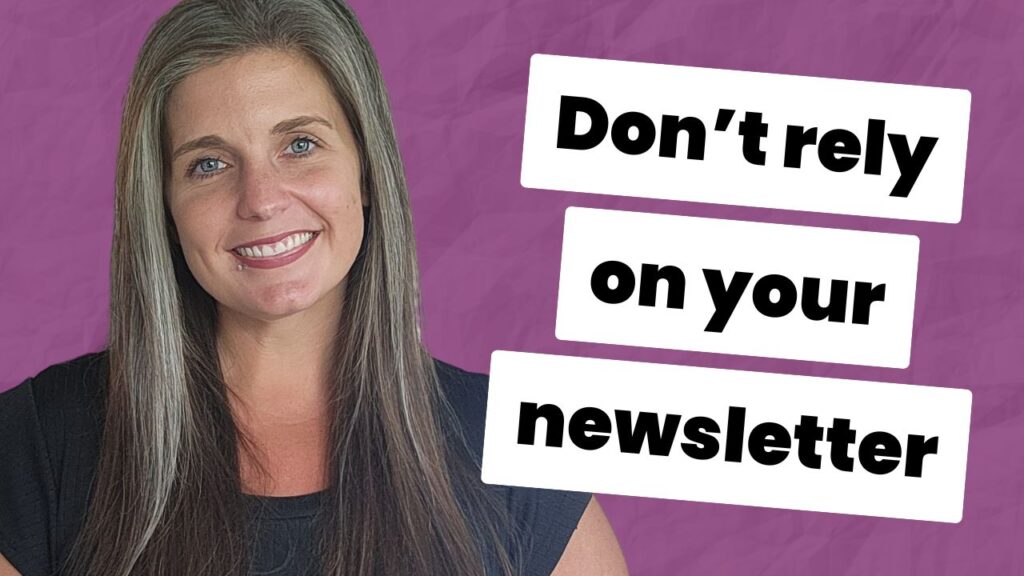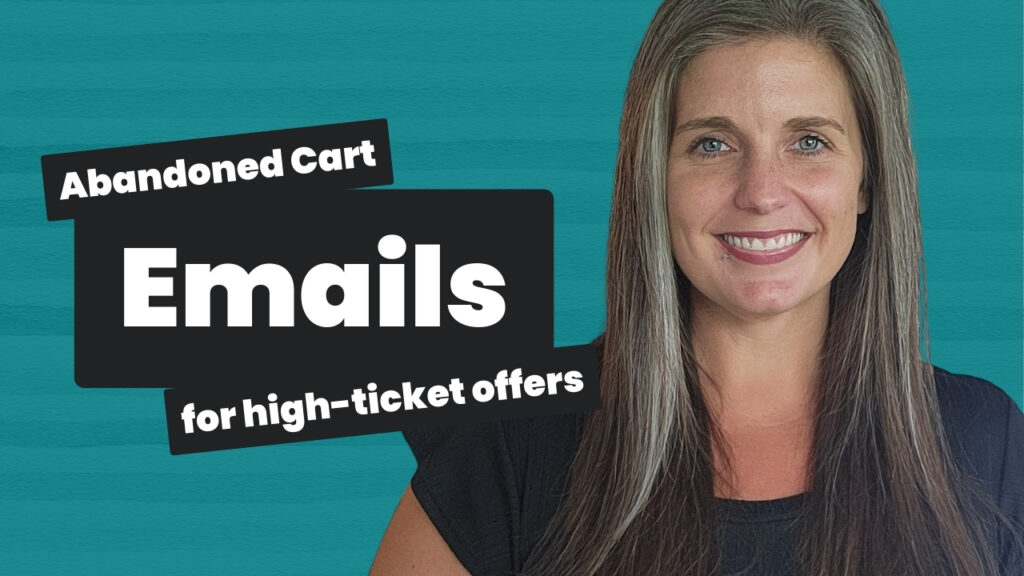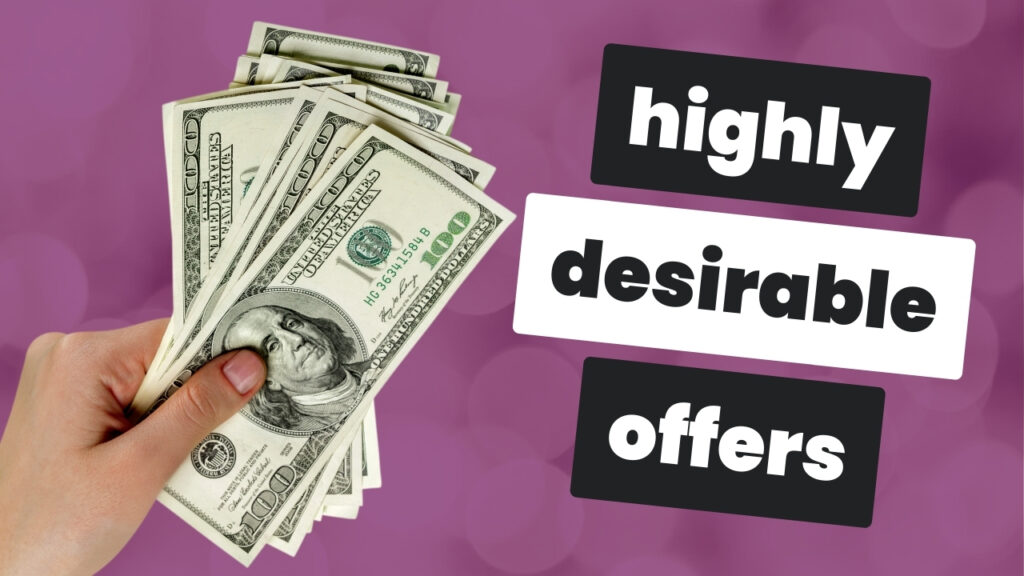What if there was an easy way to generate more revenue from each and every sale of your most popular digital products and programs?
In this video, we’re going to look at a cool little conversion tactic called an order bump.
From the customer’s perspective, an order bump is a complementary offer presented to the buyer at the bottom of the checkout page.
Order bumps could be an easy and exciting way for you to boost revenue (with very little extra effort). Here’s the logic:
When an almost-new customer is on the checkout page, finalizing their order, this person is more likely to say YES – in that moment – to a 2nd complementary item offered at a similar or cheaper price point. For the seller (that’s you), it’s a strategy that helps you “bump up” the value of that transaction. Hence the name: order bump.
Odds are you’ve seen order bumps in action as a customer.
For example:
- I’ve purchased a screen protector (as an order bump) for a new shiny smartphone.
- I regrettably did not select done-for-you installation, an order bump offered for the adjustable standing desk I work from every day.
- And one of my favorite coffee mugs was in fact an order bump for an online training I joined a few years ago.
Though this sweet little optimization opportunity may be an easy and exciting way to potentially increase your average order value (AOV), you should know that:
Order bumps come with unique selling challenges.
Because this secondary offer is housed at the very bottom of a checkout page, you’re left with little room to convince your soon-to-be customer to add this extra item to their order.
When it comes to an order bump, a simple and clear offer is better than a complex or complicated one.
That’s because the value needs to be so incredibly clear that little persuasion is needed.
It’s also why you see order bumps like:
- design templates
- email templates
- recipes
- workouts
- journaling prompts
- workshops on super-specific topics (like how-to price your digital course)
- done-for-you services (like installation, setup, or migration)
- maintenance plans or warranties
- 1-1 on calls
- branded swag (like my favorite coffee mug)
- and even free or discounted trials to subscription-based products or programs
That said, having an easy-to-add-to-cart offer type like those just mentioned is only the 1st step. There are a few more factors to, well, factor in.
Keep these 4 other success criteria in mind when testing new order bumps.
First, there should be an obvious connection between the core offer and the order bump.
Just like with the smartphone and the screen protector. Or the adjustable desk & the done-for-you installation.
Next, if necessary, use a clear descriptor as your order bump title instead of a branded product name to better communicate the value.
In this example (02:33), I’d argue that the branded title “Personal Mastery Academy” could be too vague to stand on its own. Whereas, the offer in this next example (02:40) “Traditional Cooking School Private Class Library” – though a mouthful – is more descriptive and clear.
Price matters too. Data suggests that buyers respond more favorably to an order bump with a price that’s equal to or cheaper than the core offer.
Like in this example for Workshops Wins (02:58), the core workshop offer is priced at $37 and the order bump, an 8-part email sequence template, is priced at $19. Or as you see in this example from Copyhackers (03:08), the core offer – 10x Sales Pages – is priced at $497, and the order bumps (complementary workshops) range from $97-$297.
Lastly, if what you’re offering as your order bump is sold elsewhere, consider using an “only on this page” discount. So you give customers a good reason to buy now rather than later.
In this example (03:30), the order bump deliberately states that “only on this page” the buyer gets what appears to be a $200 discount.
Watch me write persuasive order bump copy with so little space:
Now let’s look at the copywriting elements of an order bump (03:41-11:19) with persuasive pointers.
You’re looking at the first iteration of an order bump that I recently proposed to a client for one of their funnels. Let’s talk through the core elements of this order bump and the decision-making process behind why it’s written the way it’s written – starting with the offer.
The offer:
Keep in mind that you want to choose your offer based on insights you have from your research.
So, in this case, we knew based on our research, that a good portion of the audience was interested in Celtic Shamanism, hence the choice of using a Celtic workshop bundle to promote as an order bump in this funnel.
The imagery:
Let’s start with the first element you see here: an image. Your order bump software, whatever checkout software you’re using, may or may not support imagery. But if it does, you want to make sure you’re using an image that conveys the message that conveys the product that they’re going to be getting. For this specific example, because we’re using an 8-workshop bundle, we want to make sure to use an image, specifically a bundle mock-up, of the eight workshops that are going to be included.
The checkbox or toggle:
Our next element is either the toggle or the check mark, depending on your software. I’ve written this example to work with a check mark type of order bump.
It reads: “Yes! Give me eight Celtic workshops at 20 pounds off.”
There are a few persuasion aspects at play here. Typically, the placeholder copy for an order bump would say something like “yes, add this to my cart.” One thing we want to do is to is. if possible, stay away from friction words like payment, invoice, or add to cart. In this example, I’ve used – instead of yes, add to cart – I’ve said, “yes, give me…”. The same thing is happening. But by phrasing it in the form of “give me” we have reduced the friction in that copy.
We’re being very clear on what they get: 8 Celtic workshops. We’re not being clever. We’re not using some fancy brand name that’s vague. And then we’ve made sure to mention that they’re going to be saving money and how much they’re going to be saving.
The title:
The next element is the title of your order bump. And remember, from before I said, be clear. So, if at all possible, describe what you’re giving them instead of using a fancy brand name that may be vague.
In this example, we didn’t have a brand name for the bundle. The Celtic workshops themselves individually had names. But for the bundle, it was just the Celtic bundle. I opted to be even more descriptive by saying, you’re going to get 8 Celtic workshops.
Then, because I had some room, I connected those workshops to what they’re trying to achieve by learning about this topic: reconnecting you with your roots.
Again, this is based on voice-of-customer data. I went back through all the data snippets related to the desire to learn about Celtic shamanism. By far, the strongest reason for wanting to learn about this topic was to have some connection to their ancestors, to their heritage, or to their roots. This benefit was intentionally chosen based on research.
The price:
The next element you’re going to have is the price.
Here we want to make sure we state what the normal price is. That’s because this is something that is regularly offered and regularly for sale in their shop. We want to make sure that they understand visually that this is the regular price, not what they’re paying right now. Right now, they’re going to be paying a special one-time offer price.
Then, if possible, we want to highlight how much they’re saving. Don’t leave it to the customer to do the math. Just go ahead and tell them what the savings are. And I’ve opted to put the savings specifically in a different font color (if at all possible) to draw the eye to that.
The description:
Now, the final element you’re going to have in your order bump is your description copy. Because, you’ve got to keep this part tight (given the character limit that you have in whatever software you’re using for your checkouts and your order bumps), you have to be intentional about what you choose to say.
Make sure you’re pulling in the value proposition for whatever’s on offer or the core benefit that you know customers are looking for. In our case, they were looking to honor their ancestors and this ancient land. That was a big pull for people who were interested in Celtic Shamanism.
I also decided to pull in a bit of proof here with “Seer and Celticist Sam McLaren.” I’ve done this because it was important for the customers to see that this wasn’t taught by just anyone. This was taught by a reputable person with a background and expertise in this topic.
Then, later on, I make sure to mention specific types of takeaways they will get from the workshops. I couldn’t include everything. This is an 8-workshop bundle. We had a limited amount of space. I had to make sure to pull in the takeaways that were most important or most relevant for the customer based on what I knew, having done the research.
They’re going to get lessons on Celtic fundamentals, ceremonies (which was an important thing based on research) for celebrating the Celtic calendar, and the Celtic Wheel of Wisdom.
Then we’re wrapping up here in this first paragraph with so what: So you can add elements of the special branch of Shamanism to your everyday practice.
In the second paragraph, I wanted to make sure they understood that the content on offer was not something included in the membership they were originally signing up for. This was an order bump for a membership with a lot of content already. I hypothesized that one of the questions they would have would be: Do I already get access to this being a member of this program?
And the answer is no. But we wanted them to understand that this is not included in their membership, but for a limited time on this page, they can add this to their order and save money while doing it.
In the next sentence, I mention that “only on this page” will you get all these workshops at the special price. That was done intentionally because this offer is for sale elsewhere.
Then we finish up with a one-time payment, instant access, and yours to own for life. These were some criteria I felt it necessary to mention because they were signing up for a membership. Meaning:
- They would pay on a recurring basis.
- They would get instant access to some things. But because part of this membership was a lot of live events, they would have to wait for things they had to show up for live.
- And, as with a membership, you only get access to the content while you’re an active subscriber. So, if you stop paying for the membership, you lose access to everything that you had as a member of that program.
Those are the reasons I wanted to make sure they understood the differences. Becauase for this specific order bump:
- They’re only paying once because they’re buying the workshops, not subscribing to them.
- They would get instant access to all the materials. They didn’t have to wait for anything.
- And they would own access to these workshops forever – it not being a membership and being an outright purchase.
That’s a brief overview of the core elements of an order bump and the decision-making process of how you put the copy together in a way that resonates with what you know about your customers.


